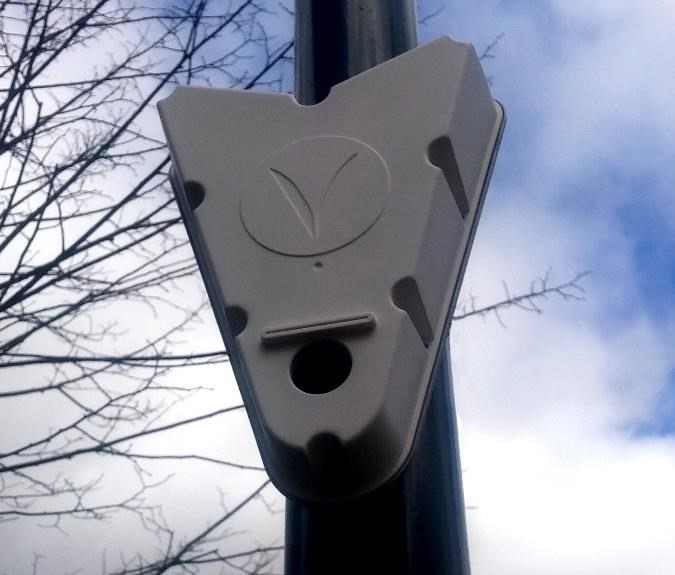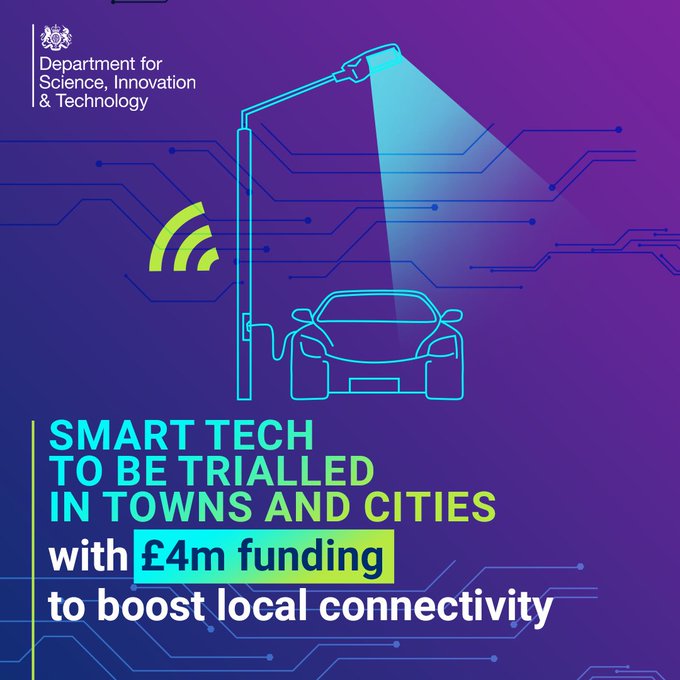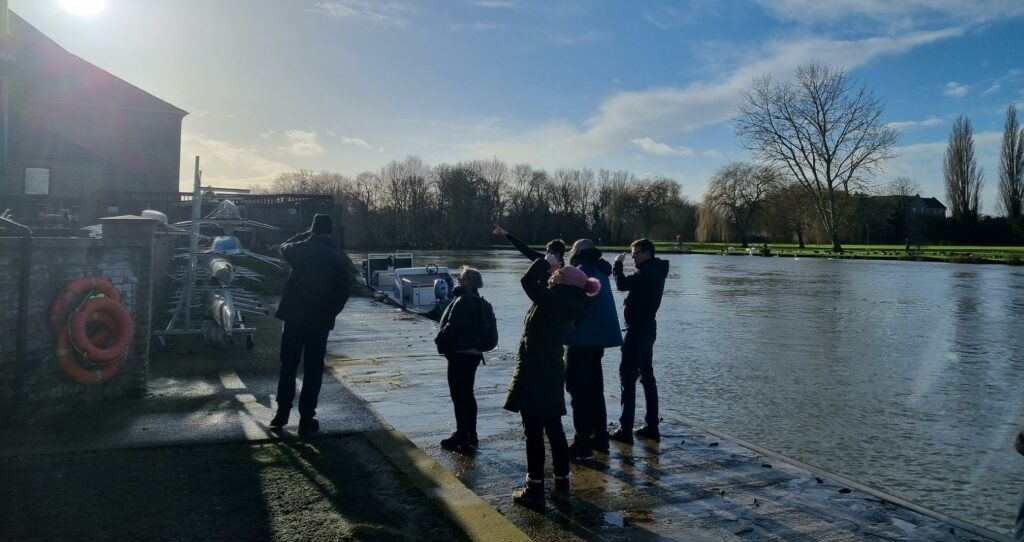Monitoring traffic flow and air quality to improve city living

One of the Vivacity Labs Ltd sensors
Smart sensors that will help build a detailed picture about how thousands of people use selected roads in Cambridge are being installed this week (Friday 3 May 2019).
The 15 smart sensors will be installed on Mill Road and surrounding streets to record numbers of pedestrians, bicycles, cars and other vehicles. The data being collated and analysed by the Smart Cambridge programme will help the Greater Cambridge Partnership understand how people use the road network.
Mill Road Bridge will be closed to vehicles for eight weeks from 1 July for crucial work being carried out to improve rail services. A temporary footbridge will be installed so pedestrians and cyclists will still be able to cross the railway for most of the working time.
The sensors will be in place for at least 18 months to gather data before the closure, during the time when there is no vehicle traffic coming over Mill Road Bridge and then after the bridge is re-opened; allowing officers to see the impact of the closure on surrounding roads, including on air quality. Keeping the sensors in place for this long will allow the team to make greater comparisons, by taking in to account daily, weekly, monthly and annual variations in traffic levels.
Claire Ruskin, Executive Board Member for the Greater Cambridge Partnership and CEO of Cambridge Network, said: “Unfortunately we can’t get round the short-term closure to the bridge but we can make some use of the inevitable disruption. We need robust data on how people use our roads and this is a real opportunity to gain an understanding of how thousands of people move in, through and around this area.
“Taking this opportunity while part of Mill Road is closed to vehicles means we can better understand the impact road closures and road works have on traffic levels and routes, including how people choose alternatives, before the road reopens as normal.
“Understanding this will inform future decisions about managing increased congestion and providing solutions for getting people around our city.”
The air quality will be monitored through seven additional sensors set up by Cambridge City Council, with funding from DEFRA.
Govia Thameslink Railway is adding an additional line between the north and south parts of the train depot at Cambridge Station. The £30 million expansion of the railway depot requires modification of one arch of the bridge to allow an additional rail track to run underneath.
The upgrade is part of the £7billion Thameslink Programme and will allow more services from Cambridge to destinations such as Brighton and Gatwick Airport.
Pedestrians and cyclists will still be able to cross Mill Road using a temporary footbridge, other than for a period of around five days when the route will need to be closed for safety reasons. There may also be other ad hoc closures for short periods to align with the sequencing of the work but any closures will be advertised on the information boards on Mill Road Bridge.
The Mill Road closure traffic sensor data can be publicly viewed on the Cambridgeshire Insight open data portal.
Related Posts

Connecting Cambridgeshire secures £220K funding from Smart Infrastructure Pilots Programme competition

Public and private sector unite to research self-driving vehicles in Cambridge

